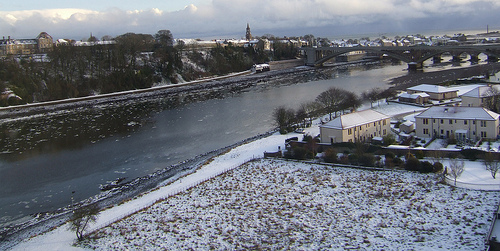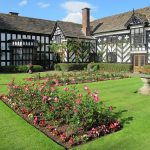Berwick Upon Tweed
Whether Berwick upon Tweed is located in Scotland or England has long been debated, in fact the town has long alternated between the two, changing sides fourteen times in two hundred years up until 1482 when it became English, however much of the town remains more Scottish than English. For example the football team plays in the Scottish leagues rather than the English divisions. This is a town that may be ‘of England’ but it is certainly not located ‘within England’. Such has been the confusion over where the town lies that it has long received a special mention in any royal proclamations that were made. Nevertheless the town has played a major part in the history and character or Scotland.

A Royal Oversight
It might be just a small border town of little insignificance, but in 1853 when Queen Victoria signed the paperwork declaring war on Russia she signed it in the name of all of her dominions including (listed separately) Berwick upon Tweed. However when the peace treaty was negotiated in 1856 the wording did not include the town, leaving it technically at war with the might of Russia. This remained the state of affairs until 1966 when a second treaty was signed by the mayor of the town and a Russian diplomat, meaning that once again both warring nations could sleep peacefully once more.
Early History
During the towns early years it was regarded as one of the most important port towns in Scotland, that was until 1296 when the English King, Edward I raided the town, slaughtering around eight thousand people that lived there, starting the long feud between the Scots and the English that raged for two centuries. During these two hundred years it is estimated that the town changed hands at least once every fifteen years. Naturally due to the nature of the dispute and the constant upheaval of the change in ownership the fortunes of the town diminished.
Attractions
Perhaps the most distinctive feature of the town is the Royal Border Railway Viaduct which was opened by Queen Victoria in August 1850. There are 28 spectacular stone arches that carry the railway a full 38 metres above the river. One of the rare things about this border town is that you can still walk the old city walls which are almost completely intact despite the town’s long and turbulent history. The majority of the town defences were built and completed during the reign of Queen Elizabeth I but were constructed upon the command of Marie de Guise back in 1558, though there had always been some form of defensive wall around the town right from the early part of its history. A walk around the walls today will take less than an hour and will offer you some incredible views across the town and along the River Tweed. Explore the barracks that date back to 1715 which house a number of museums and are looked after by English Heritage. This is a beautiful town where in reality very little has changed over the centuries.



